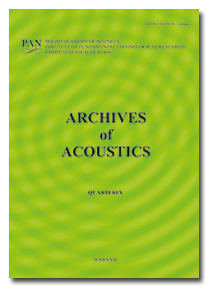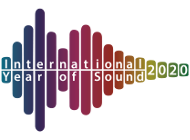Archives of Acoustics,
34, 4, pp. 445-459, 2009
Temperature Fields Induced by Low Power Focused Ultrasound in Soft Tissues During Gene Therapy. Numerical Predictions and Experimental Results
The aim of this work is twofold. Firstly, to verify a
theoretical model which is capable of predicting temperature fields appearing in
soft tissues during their ultrasound treatment. Secondly, to analyze some
aspects of the dynamics of Heat Shock Response induced by the heating process in
the context of therapeutic treatment. The theoretical investigations and
quantitive analysis of temperature increments at any field point versus time of
heating process, depending on the heat source power, spatial distribution and
duration as well as on the tissue thermal properties, has been carried out by
Finite Element Method (FEM). The validation of the numerical model has been
performed by comparison of the calculation results with the experimental data
obtained by measuring in vitro of the 3D temperature increments induced in
samples of the turkey and veal liver by the circular focused transducer with the
diameter of 15mm, focal length of 25mm and resonance frequency of 2MHz. Various
ultrasonic regimes were considered. They were controlled by adjusting ultrasound
power and exposure time. The heat shock proteins (HSP) and misfolded proteins
(MFP) levels during the proposed cyclic sonification are presented.
theoretical model which is capable of predicting temperature fields appearing in
soft tissues during their ultrasound treatment. Secondly, to analyze some
aspects of the dynamics of Heat Shock Response induced by the heating process in
the context of therapeutic treatment. The theoretical investigations and
quantitive analysis of temperature increments at any field point versus time of
heating process, depending on the heat source power, spatial distribution and
duration as well as on the tissue thermal properties, has been carried out by
Finite Element Method (FEM). The validation of the numerical model has been
performed by comparison of the calculation results with the experimental data
obtained by measuring in vitro of the 3D temperature increments induced in
samples of the turkey and veal liver by the circular focused transducer with the
diameter of 15mm, focal length of 25mm and resonance frequency of 2MHz. Various
ultrasonic regimes were considered. They were controlled by adjusting ultrasound
power and exposure time. The heat shock proteins (HSP) and misfolded proteins
(MFP) levels during the proposed cyclic sonification are presented.
Keywords:
heat-responsive gene therapy; temperature field; low-power focused
ultrasound; soft tissues; ultrasonic regime control; heat sources
distribution; heat shock proteins
Full Text:
PDF
Copyright © Polish Academy of Sciences & Institute of Fundamental Technological Research (IPPT PAN).





